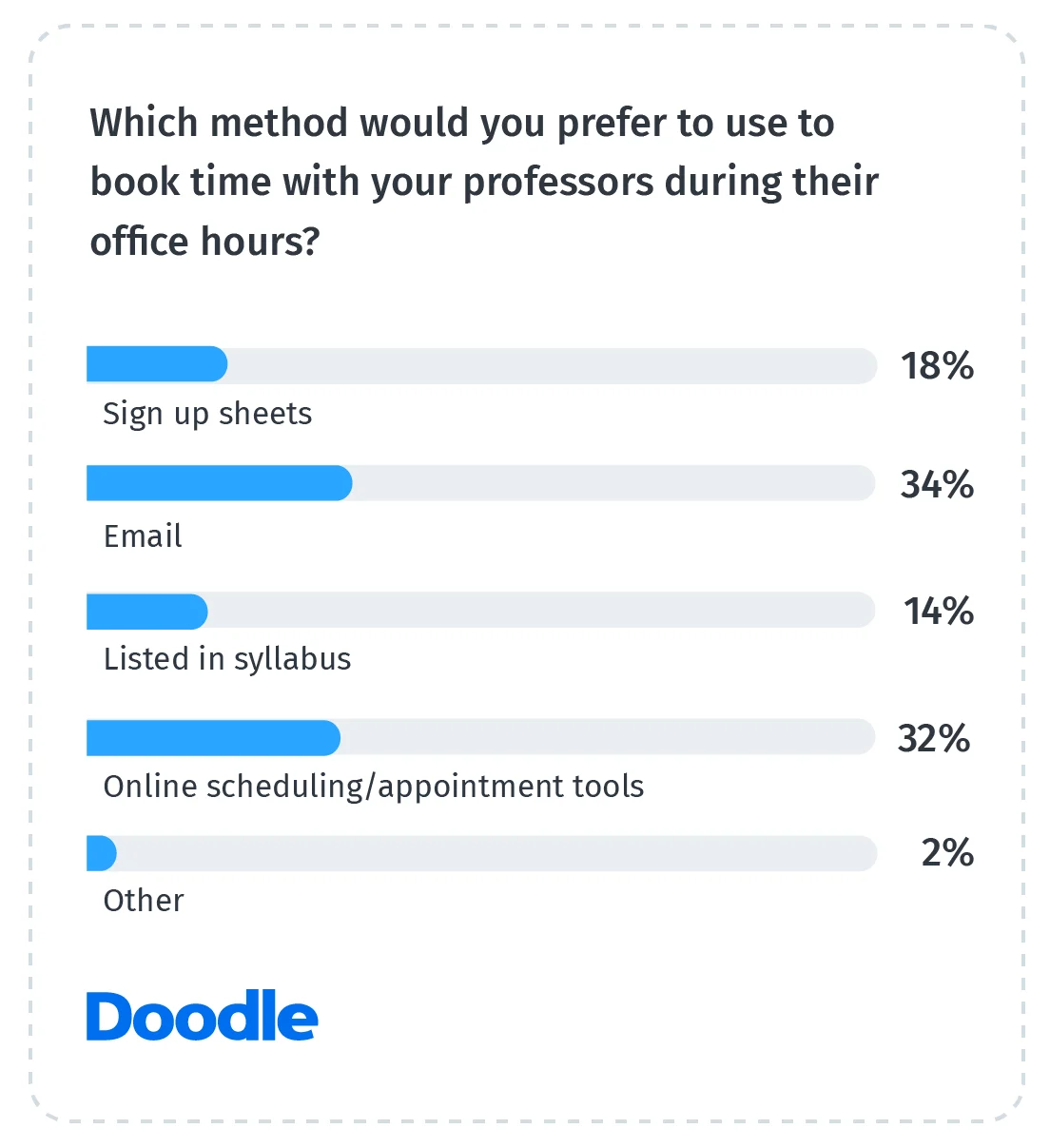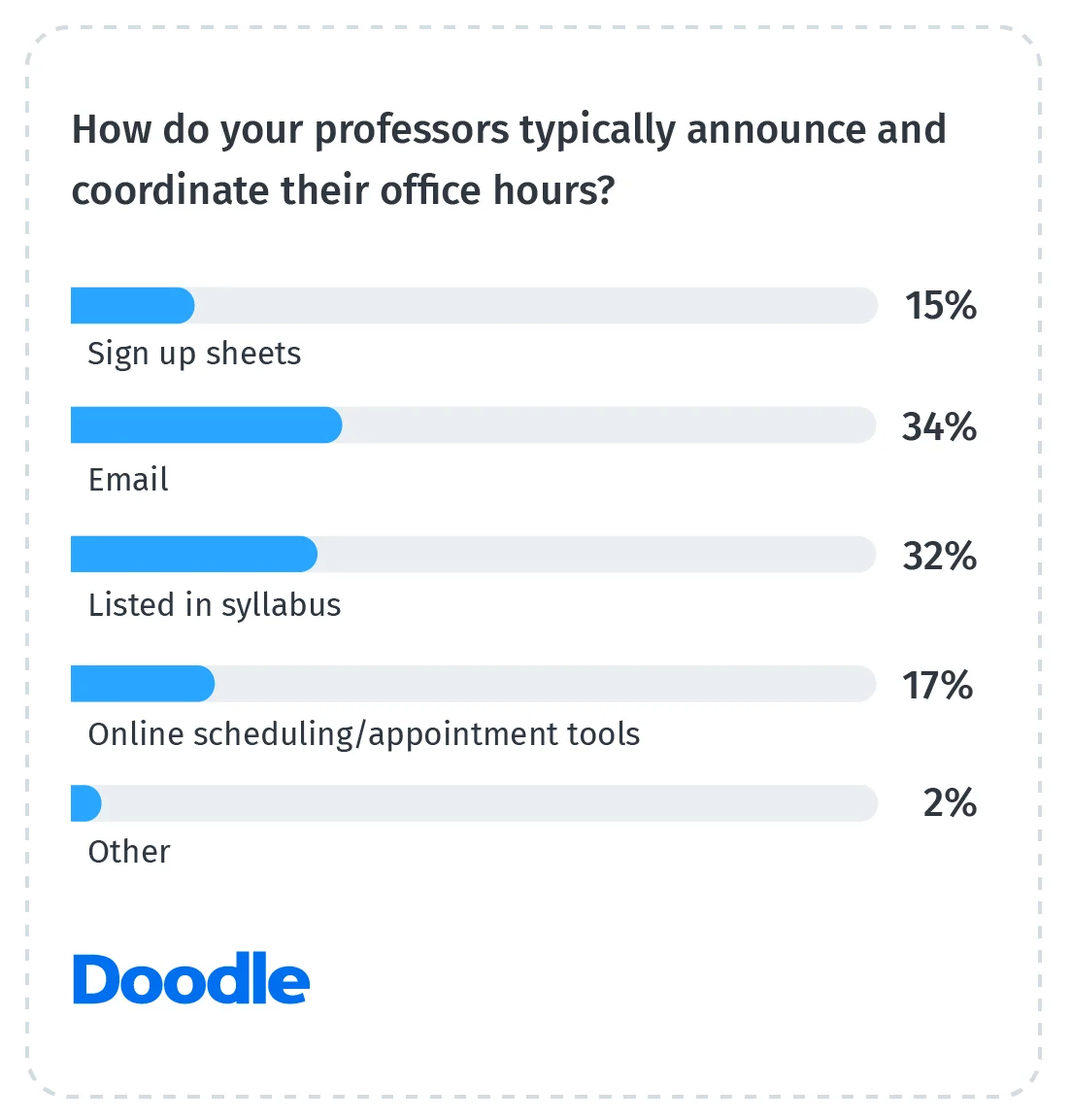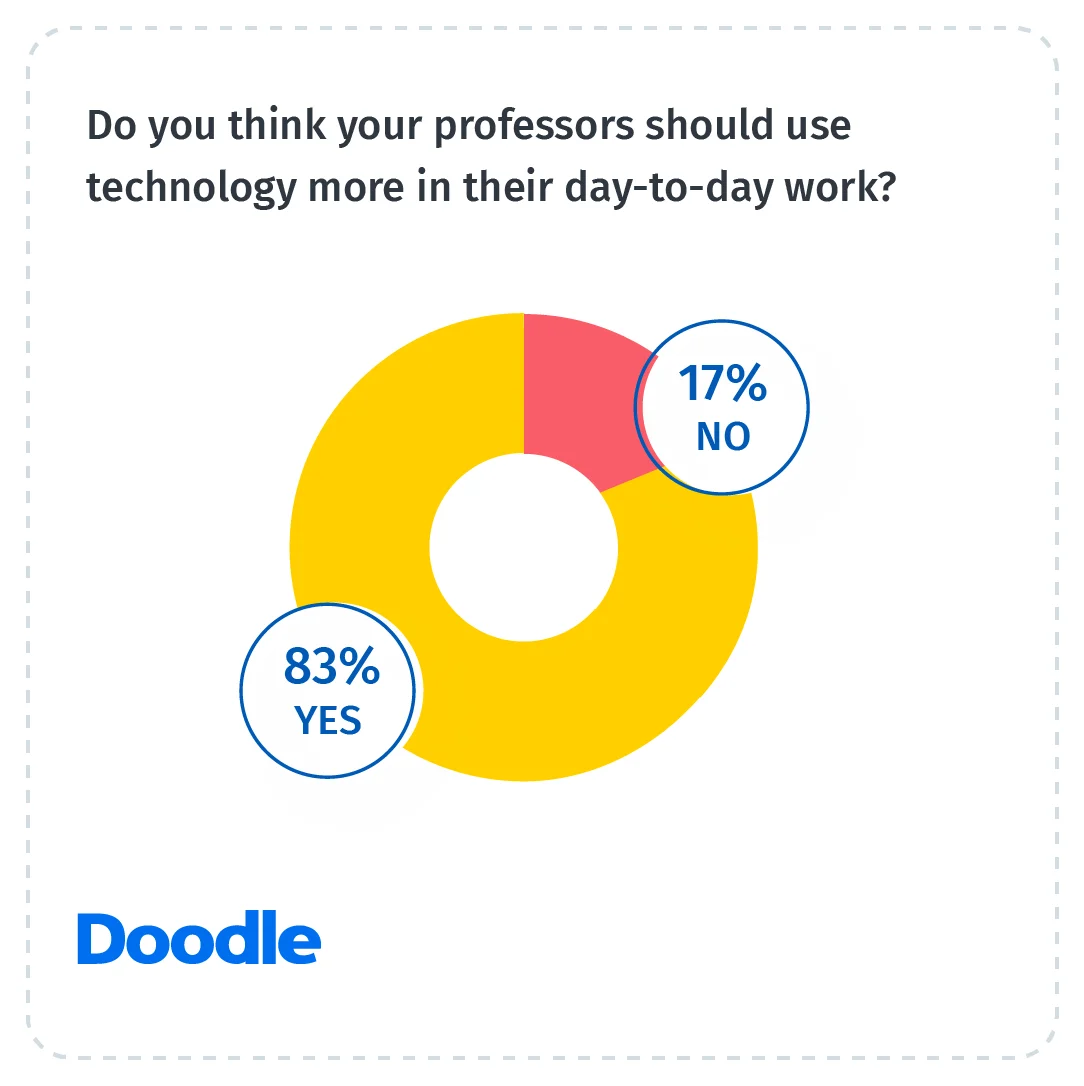5 Stats Proving the Role and Value of Technology in Education
The world of academia has traditionally been slow to embrace technology. This isn’t big news to anyone. Academic institutions have their own ways of doing things and they’ve worked for decades. If it ain’t broke, why fix it, right? Not necessarily.
Technology has so many benefits, as we’ve seen in other industries. In the education sector, in particular, technology can make the lives of students, teachers, professors, faculty members, administrators and support staff so much easier. For one, it can be tremendously useful in managing your time, which for so many educators is highly valued and often limited. That’s what we found in our research study, where we surveyed 1,109 US college and university students.
To further cement how important technology is and the role it plays in the learning experience, here is a list of five stats that will show it.
STAT #1: 65% of US college and university students use between 6-15 digital tools and apps on a daily basis.
According to our “Time Management in Education” study, 65 percent of colleges and universities use between six and 15 digital tools and apps on a daily basis. When it comes to the types of apps being used, email management (59 percent), communication and collaboration (56 percent), document management (56 percent), video conferencing (48 percent) and scheduling/calendar management (47 percent) were at the top of the list.
What does this tell us? For one, it says that a majority of students are digital natives. They’re glued to their mobile devices, are checking social media multiple times a day, are using upwards of 15+ apps daily and are consuming content digitally, whenever possible.
The findings from our study further support this. When we asked students how they organize study sessions, almost half (46 percent) said they send group messages via social media and/or text apps. This isn’t so surprising considering the fact that 44 percent of Gen Z (students) check in on social media at least hourly, with 7 percent checking in more often than every 15 minutes.
That sounds about right.
STAT #2: 55% of US college and university students say technology makes learning more flexible and convenient.
As many students head back to school for the fall semester (either physically back on campus or by way of virtual classes), faculty and staff are facing a number of hurdles.
How can you keep students motivated to learn in an online environment? How can you keep class absences to a minimum? How can you stay on top of administrative tasks and processes so as not to disrupt the learning experience? How can you get one-to-one time booked in with your students in a quick and efficient manner? How can you guide your students toward academic excellence and help them prepare for the future?
A lot of this can be made possible with technology. For example, using an online scheduling tool that integrates with the video conferencing software Zoom can take the hassle out of coordinating online classes. It can also prevent that common faux pas of missing Zoom links from calendar invites (and noticing one minute before the class is set to start). We’ve all been there.
So having a scheduling tool that works together with Zoom certainly makes learning more flexible and convenient. That’s something that everyone needs right now amidst COVID-19, when the situation changes daily and so many schools have had to close their doors and pivot to a remote learning model.
STAT #3: 32% of students say they prefer to use an online scheduling tool to book office hours with their professors.
That’s a healthy percentage of students with the desire to automate the office hours setup process. Makes sense, especially when you look at the other stat I mentioned earlier (65 percent of students use between 6-15 digital tools/apps daily).
An online scheduling tool can automate so many aspects of the process, allowing everyone involved to focus on their work (be it completing assignments, studying for exams, class curriculums, administrative paperwork or department budgets). And as our study reveals, students are already believers in the power of technology to make learning more flexible, improve collaboration with fellow students, increase access to professors and faculty as well as boost their overall productivity. Plus, students won’t have to wait for days to get quality one-to-one time with their professors for feedback on assignments, academic guidance and career advice. Faculty members who embrace technology will also see their time stretch farther. It can be so easy to get lost in a sea of lectures, groups, office hours, administrative meetings, class preparation, marking papers and attending school events. That’s just the life of a faculty member. Scheduling and blocking out time slots in your calendars will help protect your time from other demands. This will also reduce the decision fatigue that’s such a common result of adjusting to new, unexpected tasks.
STAT #4: 66% of professors still cling to outdated methods and use email or syllabus listings to coordinate their office hours.
Office hours are a staple of the college and university experience. Professors are encouraged to hold in-person (and now virtual) office hours as a way of connecting with students outside of the classroom, forging closer relationships and being more accessible for questions, feedback and guidance.
If you’re a hands-on academic like Simon Tarr, Professor of Media Arts and Director of Undergraduate Studies at the University of South Carolina, a few hours a week isn’t always enough time to offer your students the support they need. Whether you’re scheduling workshops, feedback sessions or group critiques, scheduling office hours with students can end up being a long, inefficient process.
According to Professor Tarr, “Academics are really like the poster children of the type of person who Doodle is perfect for because if everybody has the same 9 to 5, then all you have to do is just mesh Excel or mesh Exchange calendars.”
Remember that earlier stat – 32 percent of students prefer to use an online scheduling/appointment tool to book office hours with professors? Well, most professors aren’t so digitally inclined, it turns out. Only 17 percent of professors use an online scheduling tool to coordinate their office hours with their students.
That’s a large discrepancy between students’ needs and how those needs are actually being met. More importantly, it’s an opportunity for you as educators to take the necessary steps to modernize the traditional office hours setup. That leaves us with a clear solution: it’s time to transition the manual sign-up sheet to an online signup tool.
There are several types of online signup tools that can work in this context, including:
STAT #5: 83% of students think that their professors should use technology more in their day-to-day work.
As I explained earlier, a good portion of professors are still using antiquated methods (i.e. email or syllabus listing) to announce and coordinate office hours. In contrast, online scheduling tools are used far less often.
Why is this the case? Perhaps it’s because the school’s board of directors or administration don’t really understand the full scope of capabilities of online scheduling tools. Could it be because no one has quantified the amount of time and costs associated with using analog methods, like email or office hours signup sheets? The thing is, I know from stories from our university customers, that Doodle has saved educators thousands of dollars and months of time (that they can focus back into their role as educators).
It could also have to do with the fact that scheduling tools aren’t deemed to be vital to the day-to-day running of the school. I expect that this might have something to do with the perceived costs of such tools. Scheduling tools can be used for free, or for a very low cost with a host of added features. It’s unfortunately that because of a misconception that online scheduling tools are too expensive, many school administrators might worry that they won’t be able to get budget approval from the higher ups. And so, they may not bother with even considering online scheduling tools.
To get more stats and insights, download our full “Time Management in Education” research study.












